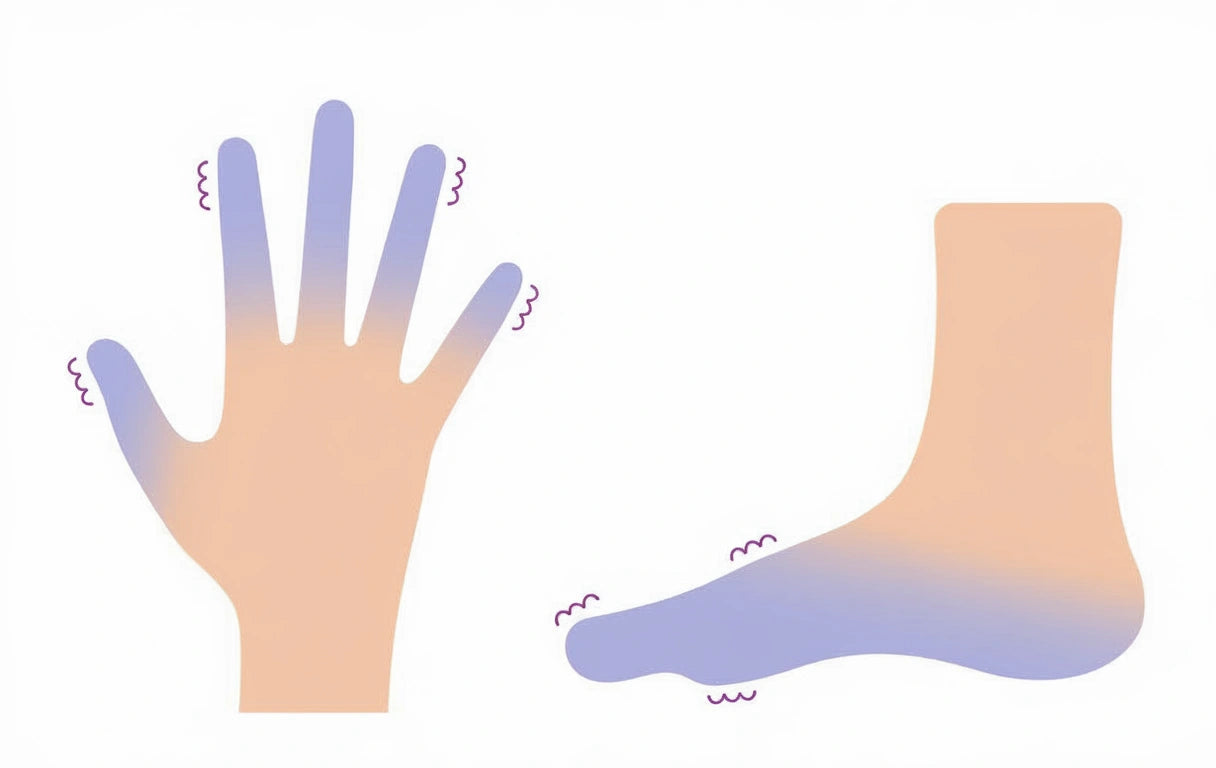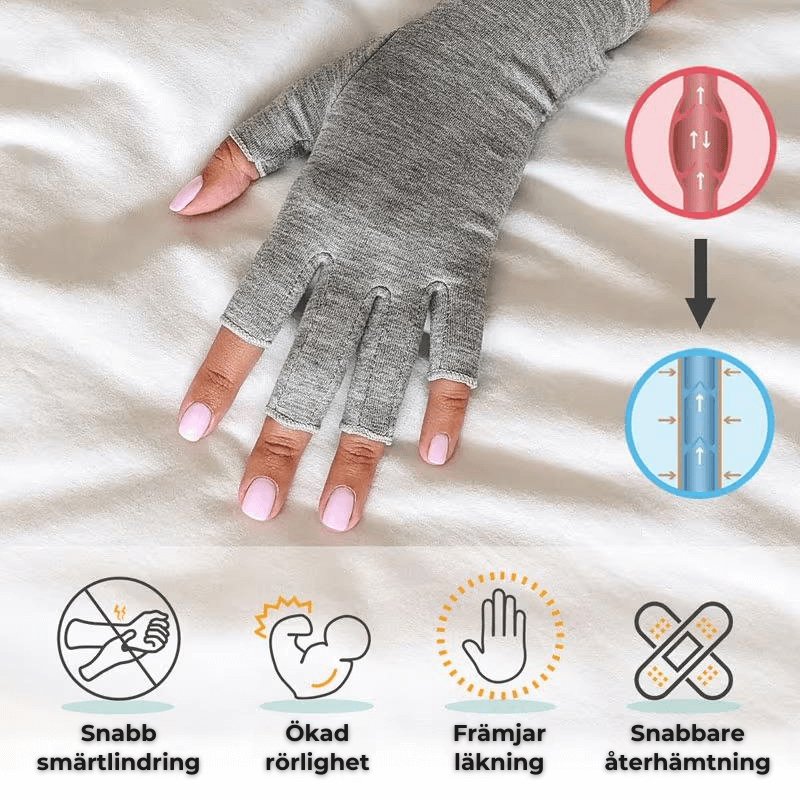Cold Hands and Feet: Causes, Symptoms, and Treatment

Cold hands and feet are a common problem that can have a variety of causes, from simple lifestyle factors to underlying medical conditions. This article reviews the most common causes, symptoms, and treatment options for cold hands and feet.
What are Cold Hands and Feet?
Cold hands and feet can be a sign of poor circulation or nerve damage. The condition can be caused by stress, cold weather, or underlying health problems . Lifestyle changes, warmer clothing, and sometimes medical treatment can help increase warmth.
Cold hands and feet are often the result of poor blood circulation in the feet and hands. When the blood vessels in the hands and feet constrict to retain heat in the body's vital organs, the extremities become cold. This can be due to normal physiological reactions to cold, but can also be linked to an underlying disease or condition that requires treatment.
Symptoms of cold hands and feet
Cold hands and feet can manifest in several ways and can vary in intensity. Common symptoms include:
- Feeling cold in the hands and feet, even at normal room temperature
- Numbness or tingling in the extremities
- Color changes in the skin, especially paleness or a bluish tone
- Difficulty warming up hands and feet
- Pain or discomfort when exposed to cold
- Slow recovery of heat after being in cold environments
- In children, cold hands and feet can often be noticed by them complaining about being cold or being reluctant to take off their socks and mittens.
A particularly pronounced symptom is white fingers, which is often associated with Raynaud's disease. In this condition, the fingers (and sometimes the toes) first turn white, then bluish, and finally red as the blood returns. The skin temperature may also be markedly lower in the hands and feet compared to the rest of the body, and some people experience a sharp boundary where the skin becomes colder.
Causes of cold hands and feet
Several factors can contribute to the development of cold hands and feet:
- Poor blood circulation: The body prioritizes keeping warm in vital organs, which can lead to reduced blood supply to the extremities.
- Raynaud's phenomenon: A condition in which the blood vessels in the fingers and toes constrict sharply when exposed to cold or stress.
- Anemia or iron deficiency: A lack of red blood cells can lead to impaired oxygen transport and coldness in the extremities.
- Diabetes: Can cause nerve damage that affects blood flow and temperature regulation.
- Hypothyroidism: Underactive thyroid can lead to increased sensitivity to cold.
- Stress and anxiety: Can cause blood vessels to constrict.
- Smoking: Nicotine impairs blood circulation.
Poor circulation in the feet can also be worsened by sitting still for long periods, wearing tight shoes, or having certain cardiovascular conditions. A sedentary lifestyle often worsens the problem, as prolonged periods of inactivity lead to even worse circulation in the extremities.
Diagnosis and treatment of cold hands and feet
To effectively treat cold hands and feet, it is important to identify the underlying cause:

How BambooFlex gloves and Compression stockings can help
BambuFlex gloves and compression socks offer several benefits for people who suffer from cold hands and feet:
- BambuFlex gloves provide an insulating effect that helps retain heat in your hands.
- The bamboo fiber in the gloves has natural heat-regulating properties that adapt to the body's temperature.
- Compression stockings improve blood circulation in the legs and feet, which can reduce the feeling of cold.
- Both products can be used both indoors and outdoors for continuous support and comfort.
- They can help relieve symptoms related to Raynaud's phenomenon and poor blood circulation.
For people with constantly cold feet, compression stockings can be particularly effective as they increase pressure on the veins, helping to push blood back towards the heart and improving overall blood flow. BambuFlex gloves are particularly useful for people with white fingers due to Raynaud's disease, as they both protect against triggers and relieve discomfort when they occur.
Conclusion
Cold hands and feet can be an uncomfortable and sometimes worrisome condition, but in most cases there are effective ways to manage the problem. By combining lifestyle changes, proper clothing, and the use of products such as BambuFlex gloves and Compression stockings, many people can experience significant improvement . However, it is important to seek medical advice if symptoms are persistent or severe, especially if they are associated with other health problems.
It is especially important to take cold extremities seriously if they occur suddenly or are accompanied by pain or discoloration that does not go away with warming. These may be signs of more serious circulatory problems that require immediate medical attention.
Frequently Asked Questions (FAQ)
Is it normal for children to often have cold hands and feet?
Yes, it is quite common as children's temperature regulation is still developing. However, if it is persistent or associated with other symptoms, a doctor should be consulted.
Can cold hands and feet be a sign of heart problems?
In some cases it may be, especially if it is associated with other symptoms such as shortness of breath or chest pain. If concerned, always seek medical advice.
How can I quickly warm up cold hands and feet?
Gentle movement, massage, warm baths or the use of products like BambuFlex gloves can help to quickly warm up the extremities.
Can diet affect the problem of cold hands and feet?
Yes, a balanced diet rich in iron and B vitamins can help improve blood circulation and reduce the problem.
When should I seek medical attention for cold hands and feet?
If the problem is persistent, worsens over time, or is accompanied by other symptoms such as pain, color changes, or sores that do not heal, you should consult a doctor.

